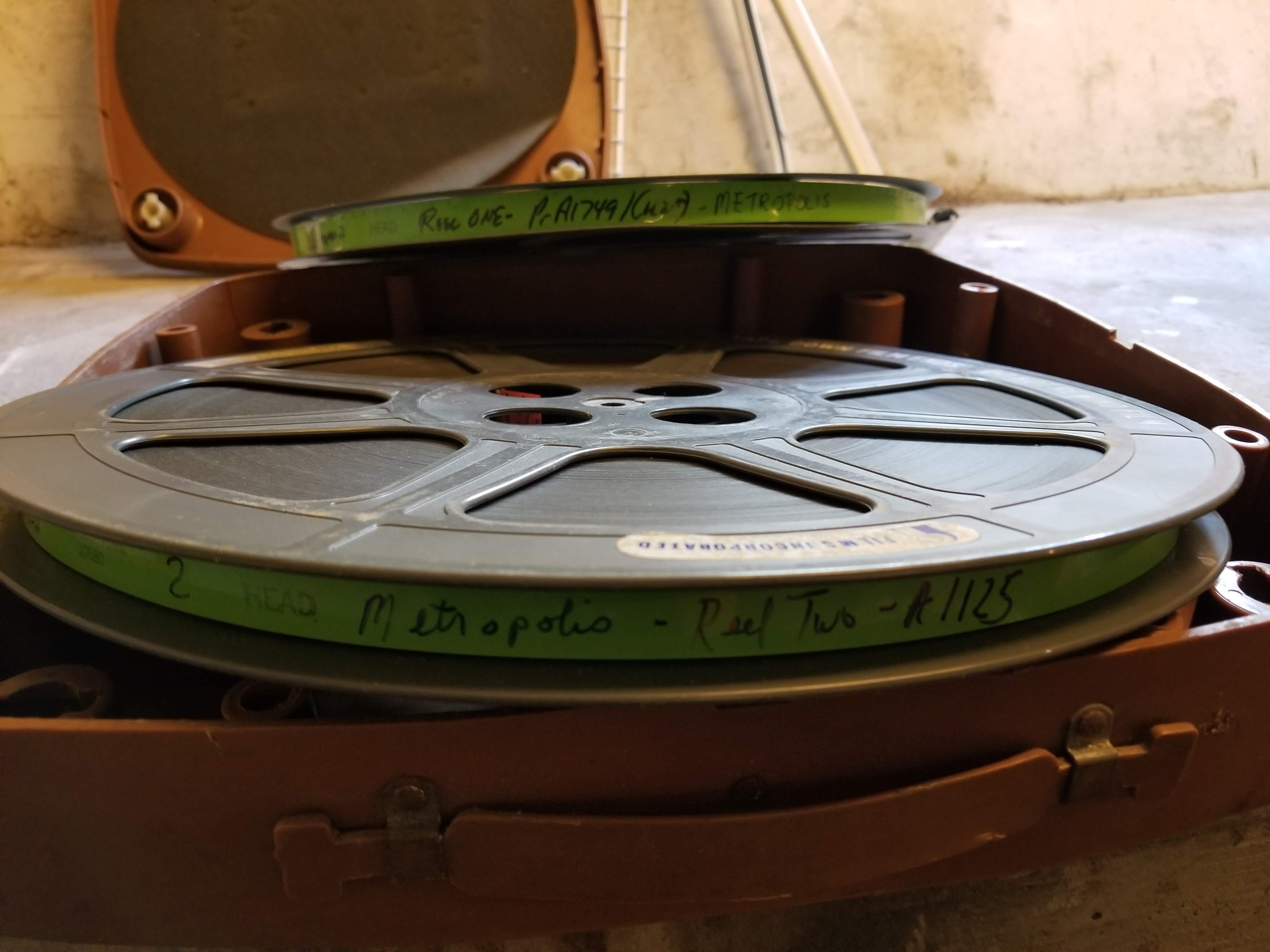| Return home |  |
Return to previous page |
1972: Thunderbird Films
You want to know about Thunderbird?
Here’s a
priceless article about Thunderbird, an article that rings too true.
It exactly parallels my own experiences in the movie world, which is why I now avoid the movie world.
Thunderbird Films opened for business sometime in the late 1960’s, and I guess it was in about
1972,
give or take a few years, that Thunderbird first offered a 16mm edition of Metropolis.
This was derived from
the same 16mm dupe that had served as the basis of the Griggs Moviedrome edition,
but
two bits missing from Griggs Moviedrome were found in the Pathéscope 9.5mm edition and cut back in.
Those two sequences were also missing from the Nordwestdeutscher Filmverleih edition of 1963,
which was a twin of the BFI print, which was a triplet of the MoMA edition,
which in turn was copied from what was left of the Ufa camera neg after it had been hacked and slashed away between 1927 and 1936.
FIRST REINTEGRATION: A fragment of the stadium was reinserted,
but horribly printed in dreadful quality and in the wrong sequence.
It was so far out of frame that much of the action went completely missing.
SECOND REINTEGRATION: Later in the film, when Freder, Maria, and Josaphat are rescuing the children from the flood,
another moment was reinserted,
and, again, out of frame and out of sequence, and this time with some duplicated action.
Further, Thea von Harbou’s epigraph to her novel was inserted as
a prologue.
Thunderbird also added a music score compiled from library cues,
many licensed from the
Thomas J. Valentino Production Music Library.
By lucky coincidence, the Thunderbird edition was issued on βetamax and VHS in
on 1 January 1980
through Budget Video Inc.’s “Hollywood Home Theatre” line,
and by a further lucky coincidence, that video is available on
YouTube.
|
|
|
Nigel Dreiner,
METROPOLIS Hollywood Home Theatre VHS (Vintage 1950’s Stock Music Soundtrack)
posted on Nov 8, 2020 When YouTube disappears this video, download it. Comments @Lilyugiproductions This is so cool! I never saw this version of metropolis! @graniezmlotem It feels bizarre to see this version. It really shows how butchered and cut down the Movie was lengthwise and in it’s overall quality before people started being interested in restoring it. It’s almost a completely different movie in comparison to the latest restoration. Even though it may as well be the worst version of Metropolis to date, I still think it’s important to preserve it as it shows how much was lost and changed through the years. @jorgelewis6568 I have a thunderbird films catalogue from 1979 which lists metropolis as being available on 16mm film. I’m guessing this VHS copy was made around the same time???
1 reply
@dariosmagata8481 I believe Hollywood Home Theatre started in 1980, so it is quite an early VHS release, but the 16mm print they copied it from was probably quite a few years older. The style of the opening and closing titles suggests a |
We can hear the optical-sound hiss and pops and thudding splices throughout.
Just as James C. Bradford had hastily picked out standard mood pieces to accompany the endless streams of movies that crossed his work station,
so too was the case with Thunderbird.
The anonymous sound editor was tasked with choosing appropriate cues from royalty-free libraries,
and chose the following.
Since the
Valentino catalogue specified which music fit which mood,
and also listed the lengths down to the second,
that simplified the mix-and-match, but creating a score that way is terribly impersonal.
This is music-by-assembly-line, not music to intensify and illustrate.
Though some of the music is good, especially the lovely final piece,
it was not composed for this film and so it clashes rather than enhances.
Shazam, SoundHound, Google, and I are unable to identify all the cues.
If you can help, I won’t complain.
